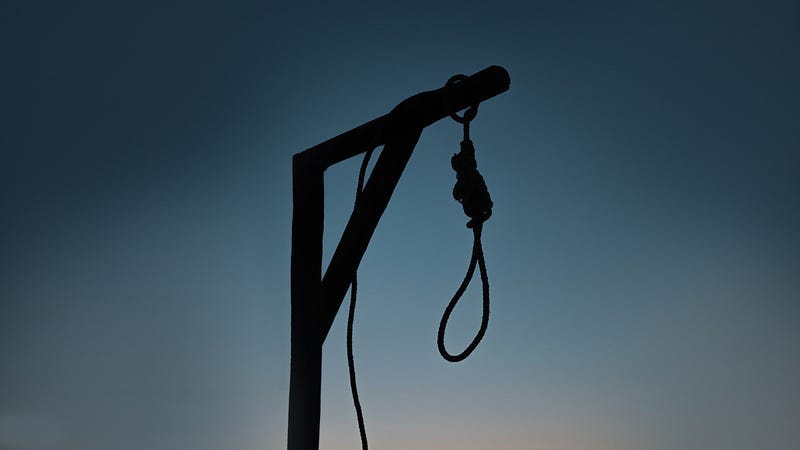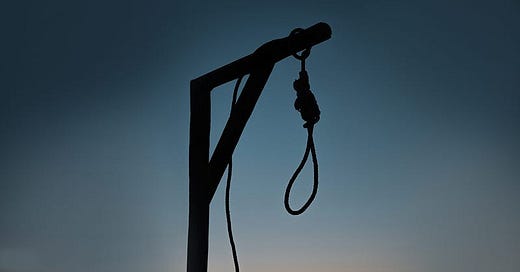Whether False Allegations of Rape Are “Incredibly Rare” — Whatever That Means—Is Not the Issue
The issues are how devastating false allegations of rape can be to their victims, and how callously complicit are the media in the very…

The Context
First, on the question of whether false allegations of rape are “incredibly rare,” let’s start with this quote from a 2014 study by four female criminologists:
“The two most vigorous reviews of false report research, which included studies from the United States, Australia, New Zealand, and the United Kingdom, found that estimates ranged from 1.5% to 90%.” ¹
The study goes on to provide ample reason for reasonable people to conclude that false allegations of rape are hardly “incredibly rare.” Let’s look further into what the study found.
The researchers, O’Neal, et. al., looked at 401 rape cases in Los Angeles in 2008 and found 55 to be clearly false. That’s 13.7% of the 401 cases they examined.
The context of the motivations for the women to file false reports was the main focus of the study. The researchers found these motivations for filing those 55 false allegations:
Anger/Revenge: 13 cases: 3.2% of the 401 cases studied
Provided an alibi to avoid trouble: 22 cases: 5.5%
To get attention or sympathy: 23 cases: 5.7%
Regret or guilt: 7 cases: 1.7%
Mental illness: 18 cases: 4.5%
Multiple motives: 28 cases: 7.0%
(The total exceeds 55 because the motivation categories were not mutually exclusive.)
Let’s acknowledge that every false allegation of rape puts at least one man or boy at risk. Some types of false allegations put large numbers of men and boys at risk, especially men and boys of ethnicities most solidly ensconced in stereotypically suspect ethnic and racial categories. It is well-documented that false allegations of rape have led to the imprisonment, even the execution, of men caught up in police dragnets and fingered in police line-ups.
But for purposes of this story, let’s confine ourselves to the cases which virtually all fair-minded people would find most reprehensible, the ones intended to vent anger and take revenge against a particular, specifically identified man or boy.
The other categories of motivations might also include the false accuser fingering a specific man or boy, but not always. The Anger/Revenge category, on the other hand, always involved the devilish wish of a woman to destroy and ruin one particular man or boy.
Observe the case O’Neal and her colleagues used to illustrate the Anger/Revenge category:
“When the officer asked whether the suspect hurt her, she stated, ‘‘No, he just made love to me and dumped me.’’ When asked why she made these allegations against the suspect, the victim stated that ‘‘she felt sad since he had just dumped her after making love to him.’’ When the investigating officer re-interviewed the victim*, she admitted having sexual intercourse with the suspect but stated that it was consensual and that he had not forced her. She said that she lied because the suspect has not called her since their meeting.” (p. 332)
* Amazing, isn’t it, how criminal justice terminology still refers to her as “the victim.”
Untold numbers of men and boys have lost their freedom, their educational opportunities, their professional licenses, their livelihoods, their friends and families — even their lives, by execution and by suicide—as a result of these horrendous accusations. We might agree that what befalls a man or boy as the target of a revenge-motivated false allegation of rape is hardly insignificant in comparison to the events the woman alleges. Yet, with the help of contextualization and other sexist advantages available much more to women and girls than to men and boys, the criminal justice system seldom prosecutes even the clearest cases of false allegation, and seldom sees any social value in protecting men and boys from such jeopardy.
Even if and when a falsely accused man or boy is exonerated, the stigma, the doubt, the “He musta done something” suspicion will dog and haunt him until the day he dies.
Media Complicity
As in every form of bullying, if there is no audience for the false allegation, there is no motivation for the bully to work her evil deed.
Fear not, the media are here to provide the false accuser with the largest audience they can muster. The bigger the audience, the better, both for the false accuser and for the media’s clickbait hit count.
What’s more is that while the media will do the woman’s bidding by smearing the man or boy for her, they will quite chivalrously let her remain anonymous.
It’s important, the contextualizers will say, to publicly name the accused man or boy ASAP, with no investigation, much less a conviction, merely on the accusation (often termed “credibly accused” these days — whatever that means) in case he is a serial rapist.
The possibility that the woman should similarly be named in case she is a serial false accuser seems somehow to be beyond media considerations of justice, equity and the public interest.
There is actually a minor and largely expired debate in journalism circles about whether naming the accused while allowing the accuser to remain anonymous makes sense. Journalists eschew anonymous accusations as a matter of principle in almost every other case. Why the exception here?
Tellingly, in one of only two U.S. articles I could find on the subject, the journalistic controversy largely ignores the concept of fairness to men and boys, and centers mostly around what’s good for women — whether allowing accusers to remain anonymous only further stigmatizes real victims of rape.²
In the other article³, it was left to a newspaper editor in Fayetteville NC to comment on the vital interests of men and boys in not being falsely named in the media. “I don’t think that the stigma of rape is what it used to be, but there is a hell of a stigma with the charge of raping somebody.”
A Modest Proposal
There is indeed good reason to fear that real victims of rape will be reluctant to come forward if they know their names will be made public. So let’s urge journalism to take a small, exploratory step in the right direction. In cases where the accuser fingers a specific person, editors will recognize the possibility of mischief — as they ordinarily do in demanding extra scrutiny and independent corroboration for allegations from anonymous accusers in other cases — and will refrain from naming either the person who claims to be a victim of rape or the person who claims to be a victim of a false allegation of rape.
No audience for the bully means no bullying, which means no wasting law enforcement resources on bully behavior, which means more real rapists are dealt with as we all want them to be.
Oh, yeah. And good men and boys don’t have their lives ruined by bad women and girls.
References
Eryn Nicole O’Neal, Cassia Spohn, Katharine Tellis & Clair White (2014) “The Truth Behind the Lies: The Complex Motivations for False Allegations of Sexual Assault,” Women & Criminal Justice, 24:4, 324–340, p. 325. DOI: 10.1080/08974454.2014.890161
Roger Cohen, “Should the Media Name the Accuser When the Crime Being Charged is Rape?” The New York Times, April 21, 1991. p. 132.
Deni Elliott, Indiana University — Bloomington Media School Ethics Case Studies, “Anonymity for rape victims, should the rules change?” undated. Republished from FineLine: The Newsletter On Journalism Ethics, vol. 1, no. 3 (June 1989).





